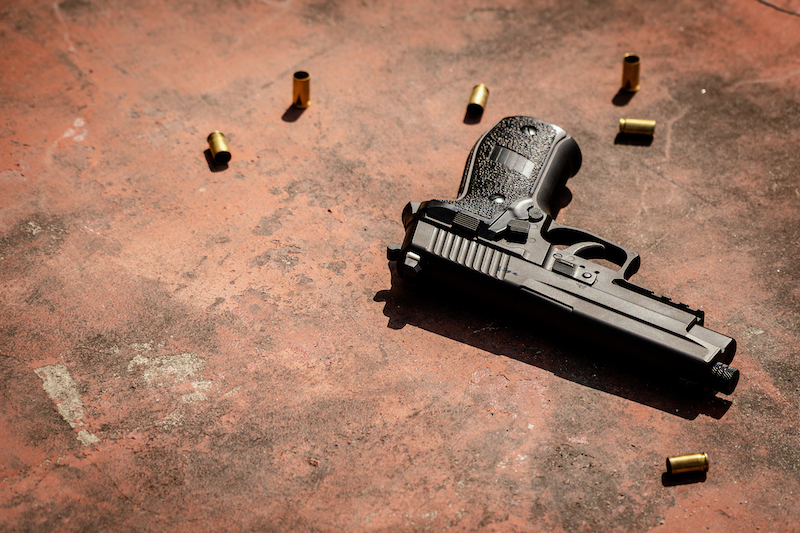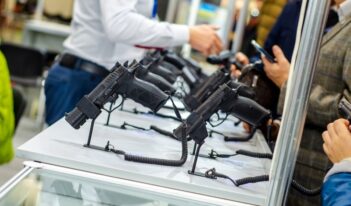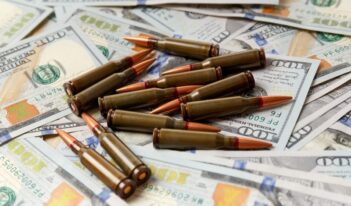
An economic approach more fully captures the cost of gun violence than a public health approach.
What do economists have to offer in evaluating gun control policies? Our answer, explained in our book, Gun Violence: The Real Costs, may come as a surprise.
Economic science offers a framework for defining and assessing the problem of gun violence that is quite different than the main contender, public health. The difference, in a nutshell, is between the public health focus on saving lives versus the economic focus on increasing safety. That may seem like a distinction without a difference, but it has important implications for how we prioritize what to do, and how much to do it.
“Gun violence is a public health problem” is a familiar claim, not only made by public health scholars and advocates but also by commentators, most prominently The New York Times’s Nicholas Kristof. Without a doubt it is a public health issue, since nearly 40,000 people are shot and killed each year and another 120,000 are shot but survive, sometimes with a resulting lifetime disability.
But the claim is the basis for a more far-reaching argument: that public health as a field offers a particularly powerful approach to addressing gun violence, due to its values and methodology. We are sympathetic up to a point, but as economists we take issue with the values framework that undergirds most public health studies.
The public health field prides itself on its pragmatism but tends to be guided by a rather narrow values proposition: The primary goal in addressing problems in its domain, whether diabetes or gun violence, should be to extend life and improve health.
A widely used measure to scale a population-level problem is life years lost to death or disability, prorated. One implication is that the value of reducing gun suicide rates among 60-year-olds is the same as reducing the gun homicide victimization rate among that group by the same amount, or that the value of saving 25 lives from mass shootings in schools is equivalent to saving that many lives in gang conflicts in the streets.
The public health and medical fields have attempted to quantify this approach in dollars by use of the “cost of illness” or “cost of injury” (COI) method. That method distinguishes between direct costs—primarily costs of medical treatment and rehabilitation—and indirect costs. The main component of indirect costs has been lost earnings due to disability and early death. The least charitable way to characterize this approach would be to note that it values human life the same way a farmer would value one of her cows.
But in recent years it has been common to add additional value to life, a monetization of the subjective value that people place on being alive and able-bodied. In practice, neither the lost earnings nor the subjective values are tailored to the actual individuals who are shot and injured or killed, but rather to population averages from earnings data and civil judgments for wrongful injury lawsuits. Predominantly, because of the high value of life derived from this method, the total COI for gun violence, taken as a whole, is over $200 billion.
The COI metric is similar in spirit to a metric based on deaths, or life years lost. COI defines the problem in terms of the actual victims, and then estimates life years lost or a closely related monetary value of those years.
Economists, on the other hand, have a quite different approach, embedded in the cost-benefit method. That method is typically used to assess the potential costs and benefits of a proposed intervention. It is forward-looking and, in principle, comprehensive.
A comprehensive understanding of the social burden of gun violence must of course account for death and disability, but it must also recognize that much of that burden falls on entire communities that deal with the threat of gun violence. Households and businesses make decisions about where to locate, and what precautions to take, based partly on that threat. Safety has tangible value, and it is reflected in property values, population movements, and economic activity. Those who cannot afford to leave an unsafe neighborhood must live with the anxiety for themselves and their families, even if they never become victims, and that anxiety is also considered in the economic approach.
From the economic perspective, then, gun violence is not only a public health problem, but also an economic development problem and an urban blight that lowers the quality of life for those who are threatened, regardless of whether they are actually victimized.
It is, for example, one reason why so many people are attempting to flee countries like Mexico, Guatemala, and El Salvador. People are willing to pay for a greater sense of safety, and the sum of payments people would be willing to make for greater safety represents one measure of this multidimensional problem. At root, this willingness to pay for safety is subjective and represents individual preferences. There is no reason to think that it is proportional to life-years lost.
To translate these ideas into dollar terms, we used a method called “contingent valuation” that has become standard in valuing clear air and wilderness and other environmental outcomes.
In a national survey, we asked respondents how they would vote on a referendum to spend more money on policing gun violence. We stipulated that the result would be a 30 percent reduction in interpersonal gun violence, and told them how much it would cost them in increased taxes. The stated tax increase spanned the range $50 to $200 and was assigned at random.
The resulting responses traced out a demand curve for improved safety, and they allowed us to determine that a 30 percent reduction in gun violence was worth $24 billion in 1998—which multiplied up to $80 billion for a 100 percent reduction.
We also found some interesting patterns. Respondents with children were more likely to vote yes, as were people with higher incomes and education, despite the fact that people with a higher socioeconomic status tend to have lower exposure to gun violence. Apparently, they also tend to have greater demand for safety.
We submit that the economic framework for valuation is more comprehensive than the public health framework, and provides greater insight into how the public feels, votes, and acts when it comes to gun violence.
More work to empirically quantify the social costs of gun violence the way economists define it should be a priority for the field moving forward, because it could have quite different implications from the prevailing public health perspective about which parts of the gun violence problem to prioritize. For example, it is entirely plausible that the value of reducing some kinds of gun violence (robbery murders) is greater than others (middle age suicides), on a per-victim basis—and this could have implications for public policy priorities and strategies. Most important is the shift in perspective from the sum of injuries to the value of community safety.
The costs of gun violence are not just counted in lost lives, but also in the decline of neighborhoods, cities, and whole countries that are heavily impacted—and by the anxieties of those who cannot leave.
This essay draws on the authors’ book, Gun Violence: The Real Costs.
This essay is part of a nine-part series, entitled Bringing Expertise to the Gun Debate.





